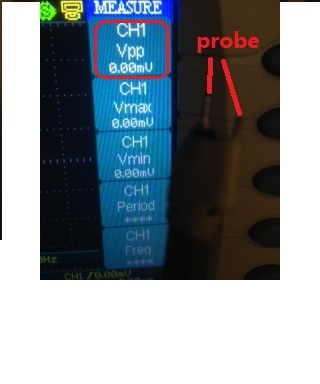Other Parts Discussed in Thread: LMR14010A
Hello:
I need help for the buck circuit using TPS54335A (22V~26V input, 5.1V3A output)
I made a prototype based on the export files from WEBENCH Design Center. I use all recommended part-number-parts it suggests.
At no load, Vout(max)=5.20V, Vout(min)=5.04V Vpp=160mV, The waveform is not frequency related.
I add another 270uf Cout, doesn't help.
Further look at the prototype, I find the 24V input has 400mV ripple. In this circuit, the Vin and Vout share the same GND. I add a ferrite beads between GND(Vin) and GND(Vout) , doesn't help.
For Vin, 400mV at 24V nominal, 0.4V/24V=1.66% is acceptable.
Any suggestion will be highly appreciated.
Thanks.
Regards;
Chang Cao




